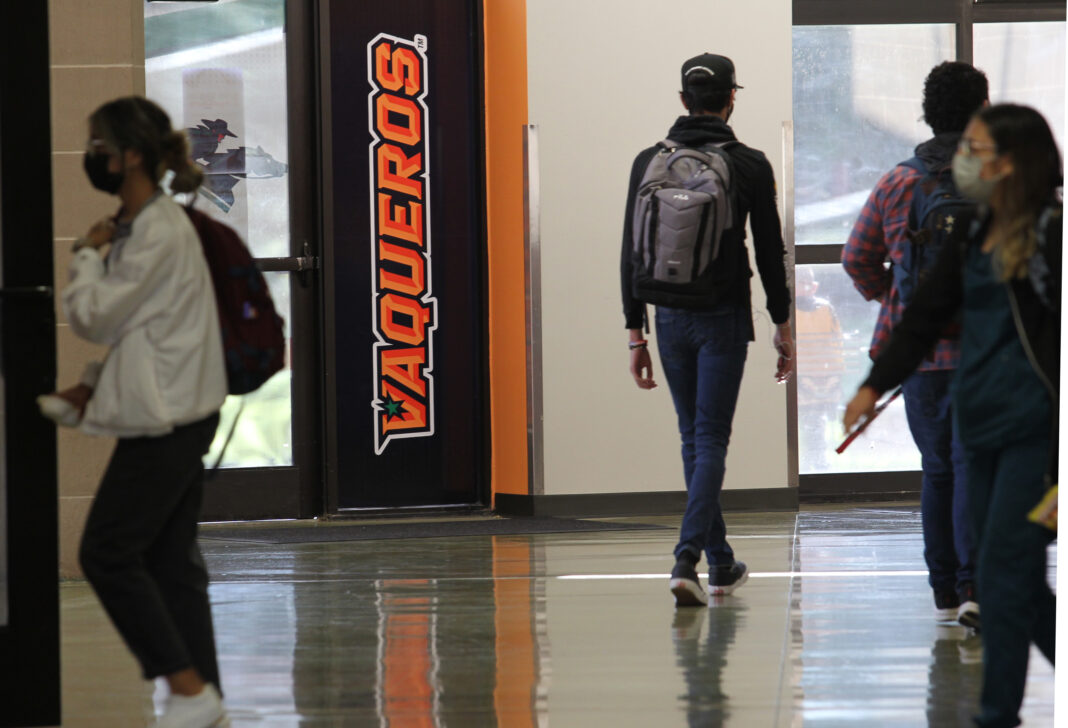NCAA Division I football in the Rio Grande Valley could prove to have a positive effect for the region’s economy, according to the results of a study.
Conducted by the University of Texas Data and Information Services Center (DISC) beginning in April 2018, the study focuses on the economic impact that a football program could have on the local economy in its first three years.
The study utilized the Impact Analysis for Planning (IMPLAN), an “accounting system of economic transactions that take place among industries, businesses (such as a university) and consumers in the economy.”
DISC implemented the IMPLAN software using projections of expenditures to create a football program. The projections were provided by the UTRGV Department of Intercollegiate Athletics.
The results of that study show that a football program could have a significant effect in the Valley.
“I think it’s going to have a very big impact on the region,” Jonah Goldberg, UTRGV Senior Associate Athletic Director for Communications said.
“In the study we learned that — excluding construction impacts related to starting an FCS (Football Championship Subdivision) program — this is expected to start 144 jobs, making $13.2 million total economic impact,” he continued. “That includes $8.1 million in labor income and $10.7 million in value added. That’s huge.”
The UTRGV student body approved a referendum last week that will allow for the creation of the football program, a Division I women’s swimming and diving program, as well as marching bands and a spirit program on both campuses.
The referendum comes with an increase to the athletic fee for students by $11.25 per credit hour, up to 12 hours, pending approval by the Board of Regents early in 2022.
“I think that it certainly has a chance to transform the region in a lot of different ways because of that,” Goldberg said about the football program.
According to the study, the program could have an economic impact of $138.3 million, including the creation of 936 jobs, generate $38.4 million in labor income, and add $60.7 million in value. These numbers reflect construction impacts and spending related to an FCS football program.
The study also shows that the local economy would benefit from the construction of a football stadium and sports related facilities, which would cost $79.5 million, $8.5 million in operating spending, and $489,067 in attendee and visiting team spending.
As previously reported, UTRGV is not required to construct a separate football stadium in the FCS. However, there are plans to construct a practice facility and field and locker rooms once the board passes the fee increase.
“When the individual economic impacts of construction spending, operating spending, and attendee and visiting team spending are added together, the total economic impact of a UTRGV football program on the local economy is positive, generating jobs, labor income, taxes, and increasing overall economic output in the local economy,” the study read.
Goldberg said that the study helped signify what the university is trying to accomplish by establishing a football program.
“What we’re looking at, we see what the economic impact is, and it helps us to know that it’s going to make a positive impact,” Goldberg said. “That’s important because when you’re looking to start new programs, you want to make sure that what you’re doing is going to help everybody. We call it a transformative move because it has a chance to not only transform UTRGV but the entire Rio Grande Valley.”
“I think the economic impact is a big part of that because we are the university for the Rio Grande Valley, so what we do needs to lift up all of our students and the entire Rio Grande Valley as well,” he continued. “We think that this is something — starting an FCS football program — that can help to lift up the entire region.”
RELATED READING:
UTRGV football by 2025: Students pass referendum to increase fees, create programs




